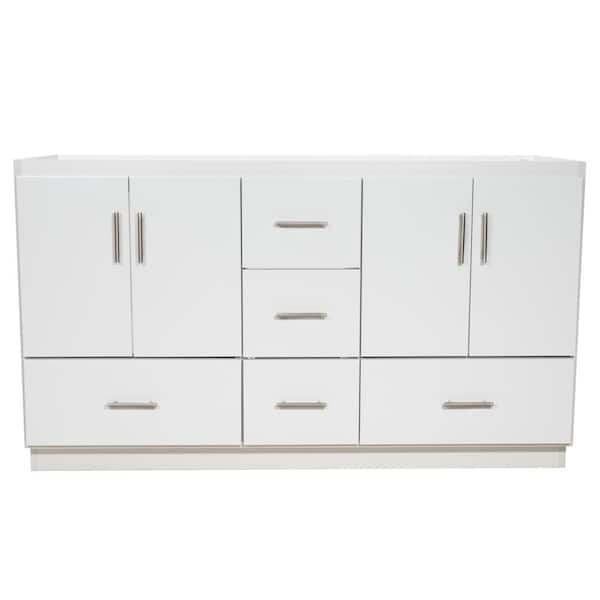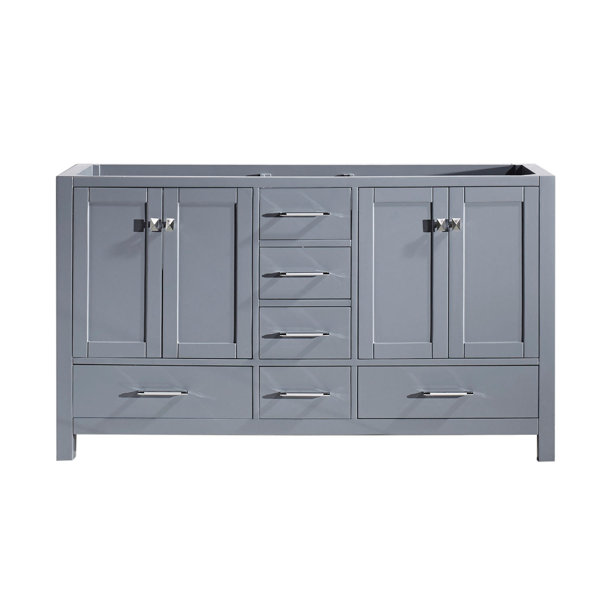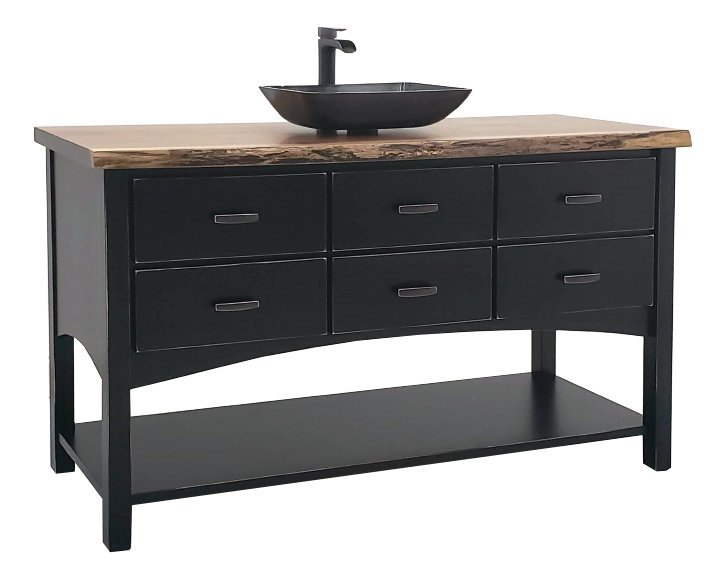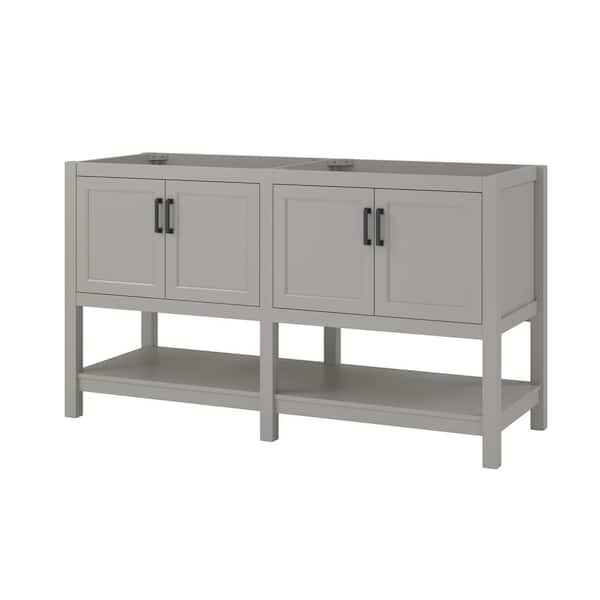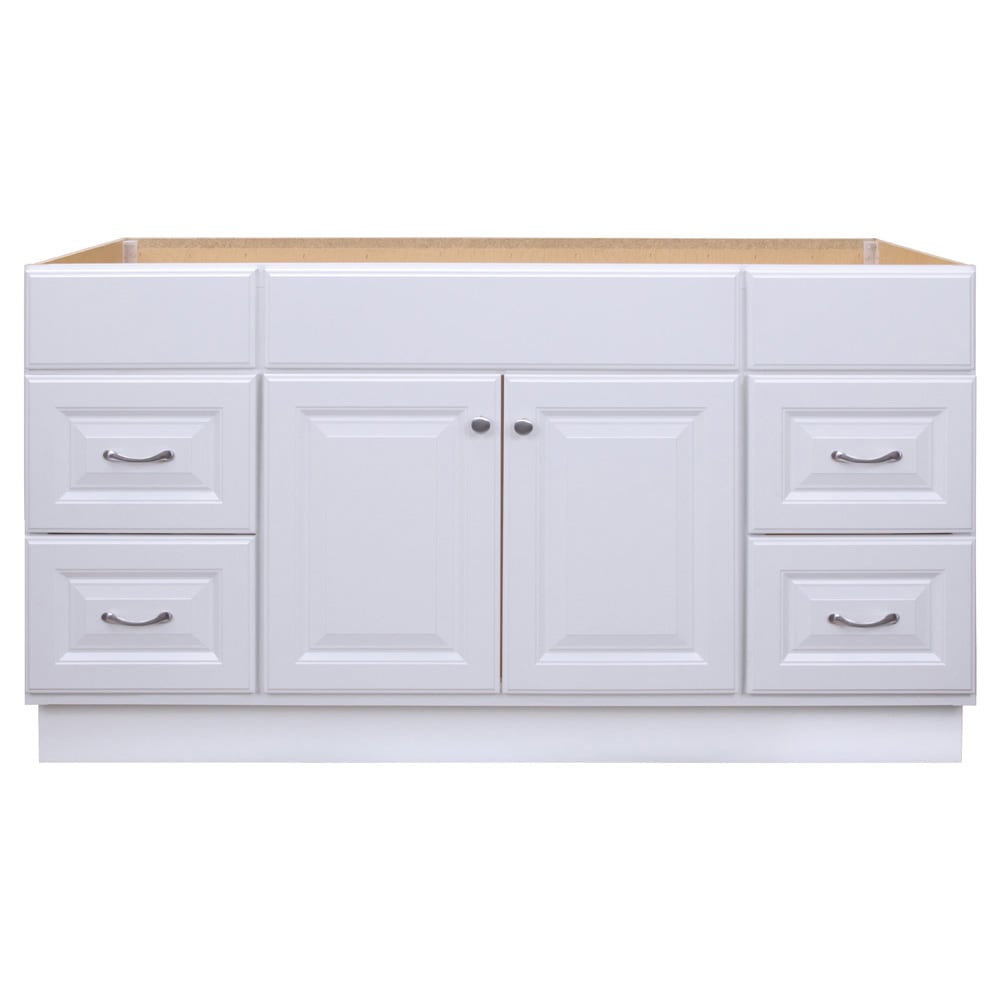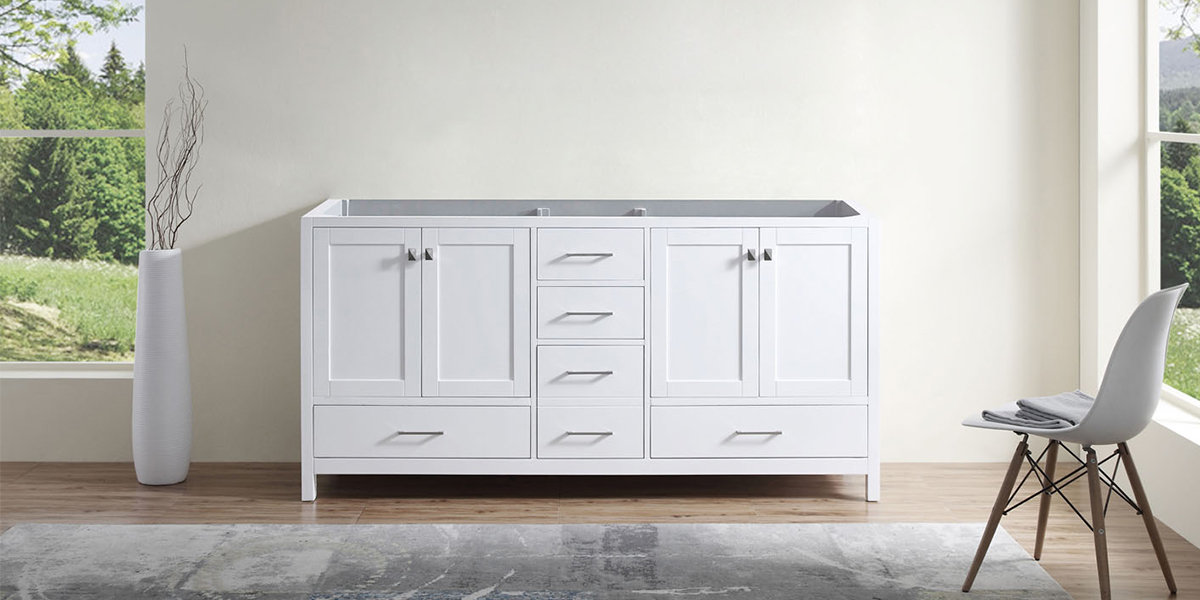60″ Bathroom Vanity Without Top
Understanding the Appeal of a 60″ Bathroom Vanity Without Top
Bathroom vanities serve as essential components in any bathroom, providing storage, functionality, and style. While many vanities come with pre-installed tops, the appeal of a 60″ bathroom vanity without a top lies in its versatility and customization options. Here’s why opting for a vanity without a top might be the perfect choice for your bathroom renovation project.
- Personalization: One of the primary reasons homeowners choose a vanity without a top is the opportunity for personalization. By selecting a separate vanity base and countertop, you have the freedom to mix and match materials, colors, and styles to create a custom look that perfectly suits your taste and complements your bathroom decor.
- Flexibility in Sink Selection: Without a pre-installed top, you can choose the type and style of sink that best fits your needs and preferences. Whether you prefer an undermount sink, vessel sink, or integrated sink, the absence of a top allows you to tailor the vanity to accommodate your desired sink style seamlessly.
- Space Optimization: In bathrooms where space is limited, a 60″ vanity without a top can be a practical choice. By forgoing the built-in top, you can maximize usable countertop space, providing ample room for toiletries, grooming essentials, and decorative accents without sacrificing functionality.
- Modern Aesthetics: Opting for a vanity without a top can lend a contemporary and minimalist aesthetic to your bathroom design. The clean lines and sleek profile of the vanity base create a modern look that pairs well with a variety of countertop materials, from quartz and granite to concrete and marble.
- Ease of Installation: Installing a vanity without a top can be more straightforward compared to installing a pre-assembled unit. With fewer components to maneuver and position, DIY enthusiasts may find the installation process more manageable, saving time and effort during the renovation project.
- Cost-Effectiveness: Depending on your budget and preferences, choosing a vanity without a top can be a cost-effective solution. By purchasing the base separately from the countertop, you may have more flexibility to allocate your budget toward higher-quality materials or other aspects of your bathroom remodel.
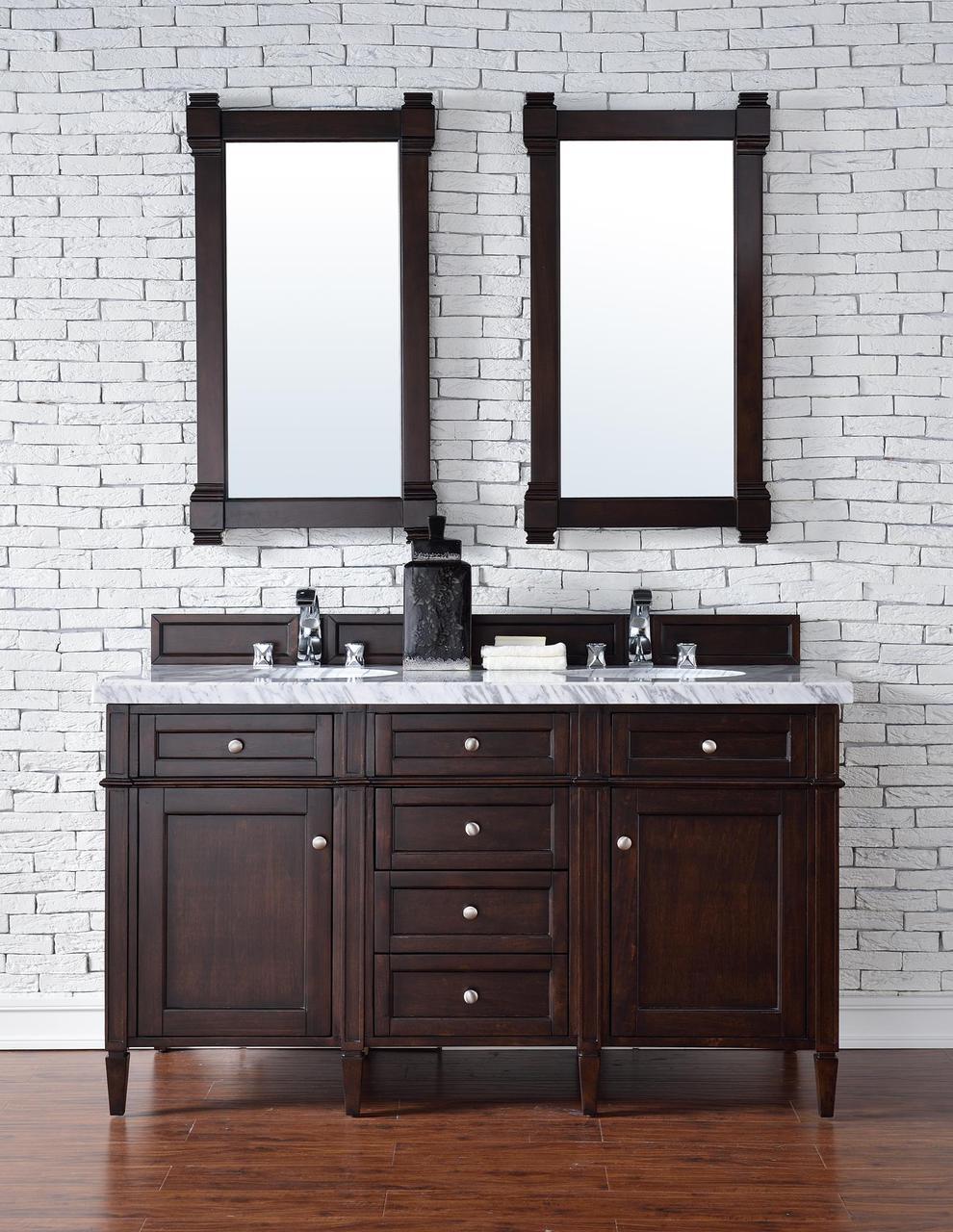
Design Versatility: Tailoring Your Vanity to Suit Your Style
When it comes to bathroom design, the vanity serves as a focal point that can significantly impact the overall aesthetic and functionality of the space. With a 60″ bathroom vanity without a top, you have the freedom to tailor the design to suit your style preferences and complement your existing decor. Here are some design tips to help you achieve a customized look that reflects your taste and enhances the ambiance of your bathroom.
Choose the Right Base Style: The first step in designing a custom vanity is selecting the right base style that aligns with your aesthetic preferences. Whether you prefer a sleek and modern look or a more traditional and ornate design, there are various base styles to choose from, including freestanding, wall-mounted, and furniture-style vanities.
Consider Material Options: The material of your vanity base plays a crucial role in determining its durability, appearance, and overall aesthetic. Common materials for vanity bases include wood, MDF (medium-density fiberboard), laminate, and metal. Consider the durability, maintenance requirements, and aesthetic appeal of each material before making your selection.
Explore Finish Options: The finish of your vanity base can significantly impact its appearance and how it complements the rest of your bathroom decor. From classic finishes like white and espresso to more contemporary options like matte black and natural wood tones, there’s a wide range of finishes to choose from to achieve the desired look.
Customize Hardware and Accents: Pay attention to the hardware and accents on your vanity base, as these details can add personality and visual interest to the design. Consider opting for decorative knobs or handles in a complementary finish to enhance the overall aesthetic appeal of the vanity.
Incorporate Storage Solutions: Maximize the functionality of your vanity by incorporating ample storage solutions to keep your bathroom essentials organized and easily accessible. Depending on your needs and space constraints, you can choose from drawers, cabinets, open shelves, or a combination of storage options to accommodate your belongings.
Coordinate with Countertop Material: Since you’re opting for a vanity without a top, carefully consider the countertop material that will complement your chosen base design. Whether you prefer the timeless elegance of marble, the durability of quartz, or the industrial chic appeal of concrete, select a countertop material that harmonizes with the style and color palette of your vanity base.
Material Matters: Exploring Options for Your Vanity Base
When selecting a 60″ bathroom vanity without a top, choosing the right material for the base is crucial to ensure durability, longevity, and visual appeal. With a variety of materials available, each offering unique characteristics and benefits, it’s essential to explore your options to find the perfect match for your bathroom design. Here’s a closer look at some popular materials for vanity bases and their respective features.
Wood: Wood is a classic and versatile material choice for vanity bases, offering warmth, texture, and natural beauty to the bathroom space. Common wood species used for vanity bases include oak, maple, cherry, and walnut, each with its unique grain pattern and color variations. Wood vanities can be stained or painted to complement a range of design styles, from traditional to contemporary.
MDF (Medium-Density Fiberboard): MDF is an engineered wood product made from recycled wood fibers and resin, resulting in a durable and affordable material option for vanity bases. MDF is known for its smooth surface, making it easy to paint or laminate in various finishes and colors. While MDF is susceptible to moisture damage if not properly sealed, it can be an excellent choice for bathrooms with proper ventilation and moisture control measures in place.
Laminate: Laminate is a cost-effective and low-maintenance material option for vanity bases, offering a wide range of colors, patterns, and textures to suit any design aesthetic. Laminate is resistant to water, stains, and scratches, making it ideal for high-traffic bathrooms. With advancements in laminate technology, you can achieve the look of natural materials like wood, stone, or metal at a fraction of the cost.
Metal: Metal vanity bases, such as those made from stainless steel or brushed nickel, can add a contemporary and industrial flair to your bathroom design. Metal vanities are durable, easy to clean, and resistant to moisture, making them suitable for humid bathroom environments. Additionally, metal bases can be paired with a variety of countertop materials to create a customized look that complements your style preferences.
Composite Materials: Composite materials, such as acrylic and polyester blends, offer a blend of durability, versatility, and affordability for vanity bases. These materials are non-porous, resistant to moisture and stains, and available in a wide range of colors and finishes. Composite materials are lightweight and easy to install, making them a popular choice for DIY enthusiasts. Additionally, composite materials can be molded into various shapes and designs, allowing for creative customization options to suit your bathroom decor.
Glass: Glass vanity bases can add a touch of elegance and sophistication to your bathroom design, creating a sleek and modern aesthetic. Tempered glass is durable, resistant to scratches and stains, and easy to clean, making it a practical choice for vanity bases. Glass bases can be paired with metal or wood accents for added visual interest and contrast, allowing you to customize the look to match your style preferences.
Installation and Maintenance Tips
Installing a 60″ bathroom vanity without a top requires careful planning, precise measurements, and attention to detail to ensure a seamless and secure fit. Additionally, proper maintenance is essential to keep your vanity looking its best and functioning optimally for years to come. Here are some installation and maintenance tips to help you get the most out of your vanity without a top.
Preparation: Before installing your vanity base, ensure that the area is properly prepared and that any old fixtures or cabinets have been removed. Take accurate measurements of the space to ensure that the vanity will fit correctly and allow for adequate clearance around plumbing fixtures.
Leveling: Use a level to ensure that your vanity base is installed evenly and securely. Uneven installation can lead to issues with drawer and door alignment, as well as potential structural issues over time. Make any necessary adjustments to ensure that the vanity is level before securing it in place.
Anchoring: Secure the vanity base to the wall studs using appropriate anchors and screws to prevent tipping or shifting. Additionally, consider using shims to provide additional support and stability, especially if the floor is uneven.
Sealing: If your vanity base is made of wood or MDF, consider sealing it with a waterproof sealant to protect against moisture damage. Apply the sealant according to the manufacturer’s instructions, paying particular attention to areas prone to water exposure, such as the baseboard and toe kick.
Cleaning: Regular cleaning is essential to maintain the appearance and hygiene of your vanity base. Use a mild soap and water solution or a non-abrasive cleaner to wipe down the surfaces, followed by a thorough rinse and drying to prevent water spots and streaks.
Avoiding Harsh Chemicals: Avoid using harsh chemical cleaners or abrasive scrubbers on your vanity base, as these can damage the finish and surface materials. Instead, opt for gentle cleaning solutions and soft cloths to preserve the integrity of the vanity.
Budget-Friendly Solutions
Renovating a bathroom can be a significant investment, but there are ways to achieve a stylish and functional space without overspending. When shopping for a 60″ bathroom vanity without a top, consider budget-friendly solutions that offer quality construction, durability, and style without breaking the bank. Here are some tips for finding affordable vanities that meet your needs and budget constraints.
Shop Online: Online retailers often offer a wide selection of vanities at competitive prices, allowing you to compare options and find the best deals without leaving the comfort of your home. Look for reputable websites that offer free shipping or discounted rates on large items like vanities.
Consider Ready-to-Assemble (RTA) Options: Ready-to-assemble vanities are available in flat-pack kits that require assembly upon delivery. While DIY assembly may require some additional effort, RTA vanities are typically more affordable than pre-assembled units due to lower shipping and storage costs.
Explore Outlet Stores and Clearance Sales: Many home improvement stores and furniture outlets offer discounted vanities through outlet sections or clearance sales. Keep an eye out for promotions, seasonal sales, and discontinued models to score significant savings on high-quality vanities.
Opt for Simple Designs: Vanity designs with clean lines and minimal embellishments tend to be more budget-friendly than ornate or intricately detailed models. Choose a simple yet stylish vanity base that complements your bathroom decor without unnecessary frills or added costs.
Consider Alternative Materials: While solid wood vanities may come with a higher price tag, alternative materials like MDF, laminate, and composite can offer similar aesthetics and durability at a fraction of the cost. Explore different material options to find a vanity that fits your budget without compromising on quality.
DIY Customization: If you’re handy with tools and have basic carpentry skills, consider building or customizing your vanity base to save money on labor costs. With readily available materials and online tutorials, DIY customization allows you to create a personalized vanity that reflects your style preferences while staying within budget.
Design House Concord 60 inch Unassembled 2-Door 4-Drawer Bathroom Vanity Without Top in White
Foremost Hollis 60 in. W x 21-1/2 in. D x 34 in. H Bath Vanity
James Martin Portland 60″ Double Vanity, Without Top
Design House Brookings 60-inch Unassembled Bathroom Vanity without Top in Modern Birch
Project Source 60-in White Bathroom Vanity Cabinet in the Bathroom
Shop Vanities without Tops – Bathroom Vanities – Luxury Living Direct
60 Inch Vanities – Bathroom Vanities without Tops – Bathroom
Barnwood Vanity without Top – 5 Foot, 6 Foot – Double Sink
Related Posts:
- Antique White Bathroom Vanity Set
- Bathroom Vanity Tops With Integrated Sink
- Offset Bathroom Vanity
- Redoing A Bathroom Vanity
- Pedestal Bathroom Vanity
- Japanese Style Bathroom Vanity
- Bathroom Vanity Unit Dimensions
- 60″ Bathroom Vanity Without Top
- Bathroom Vanity Replacement Globes
- Bathroom Vanity Stools With Wheels
